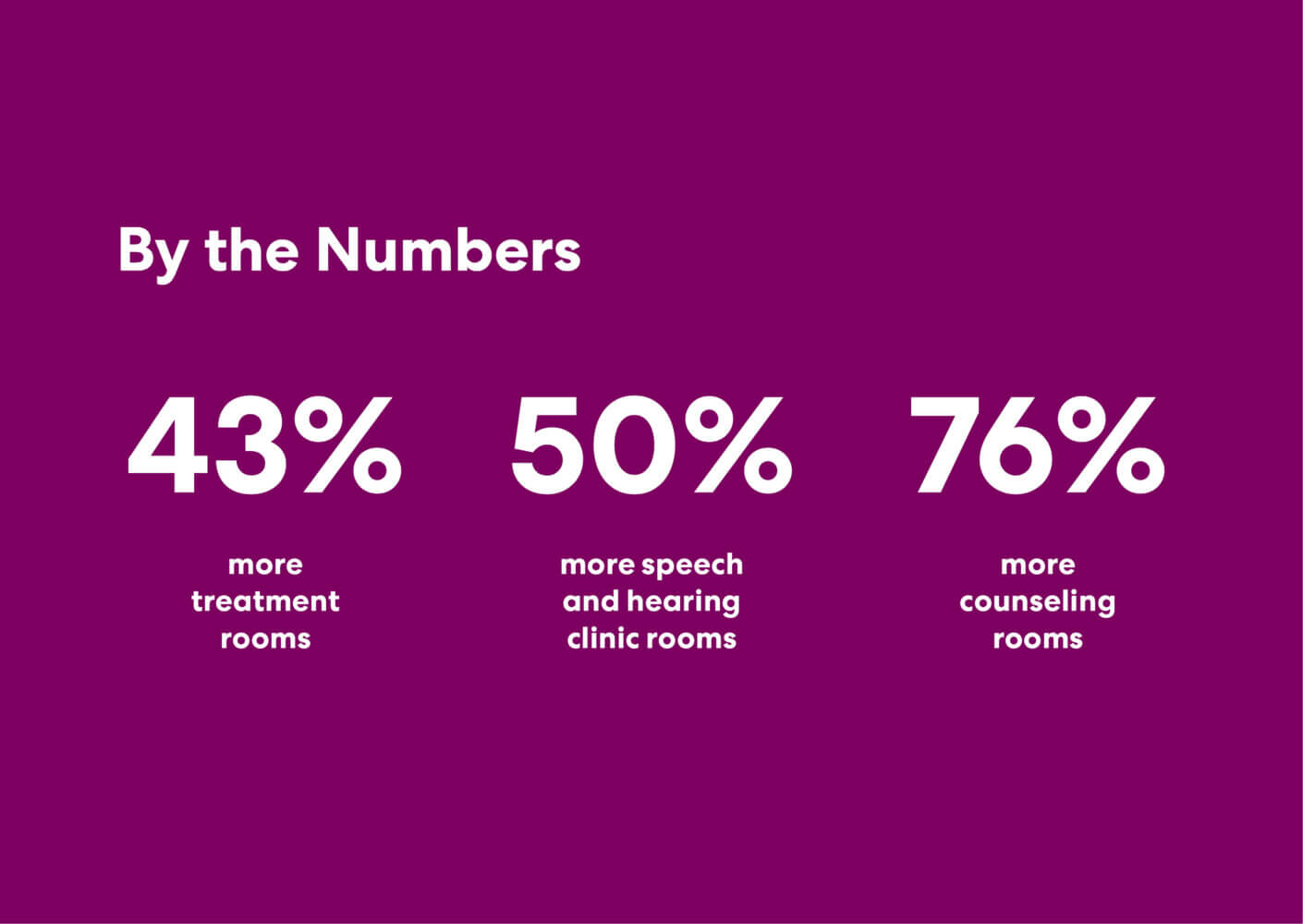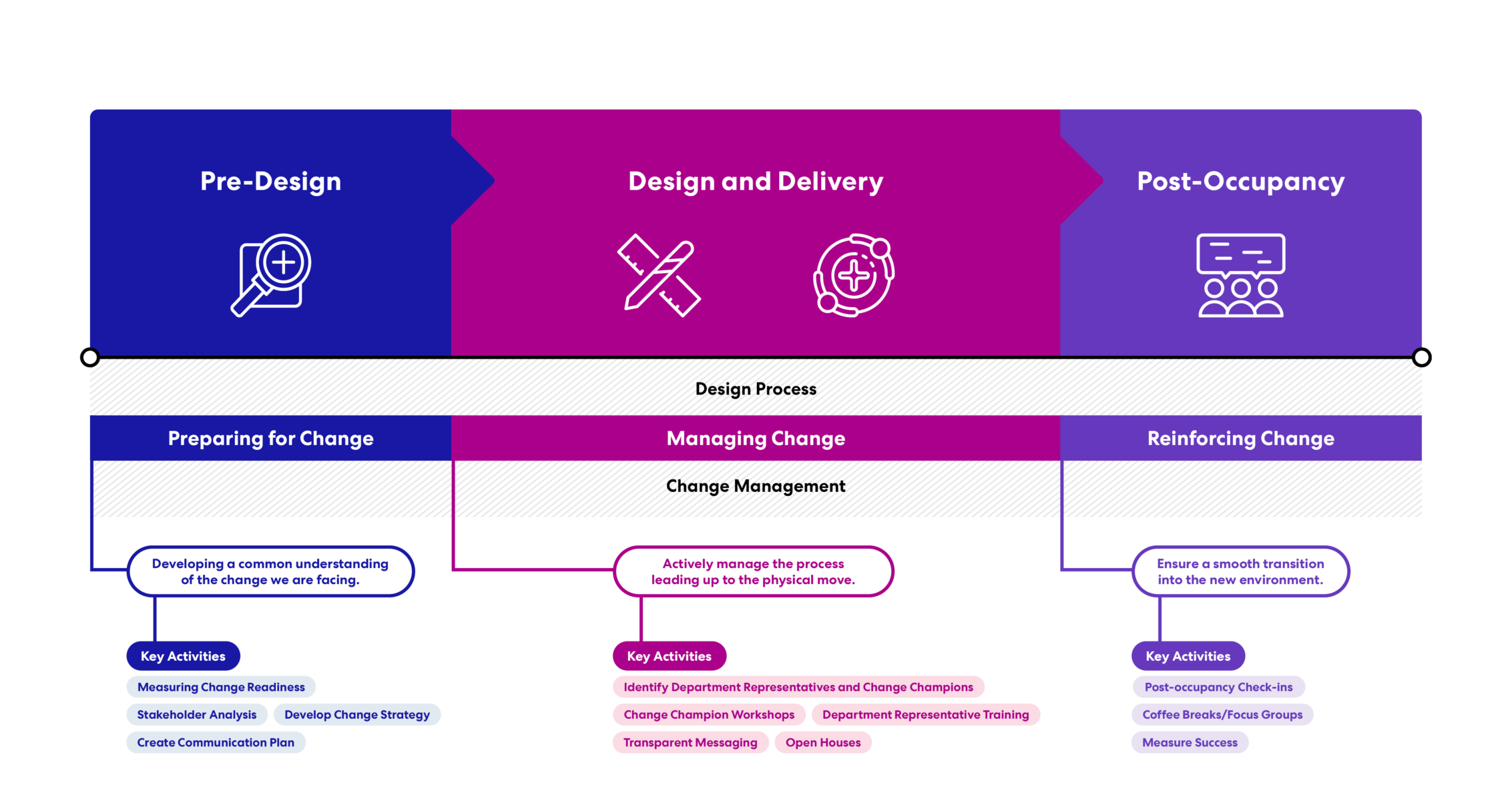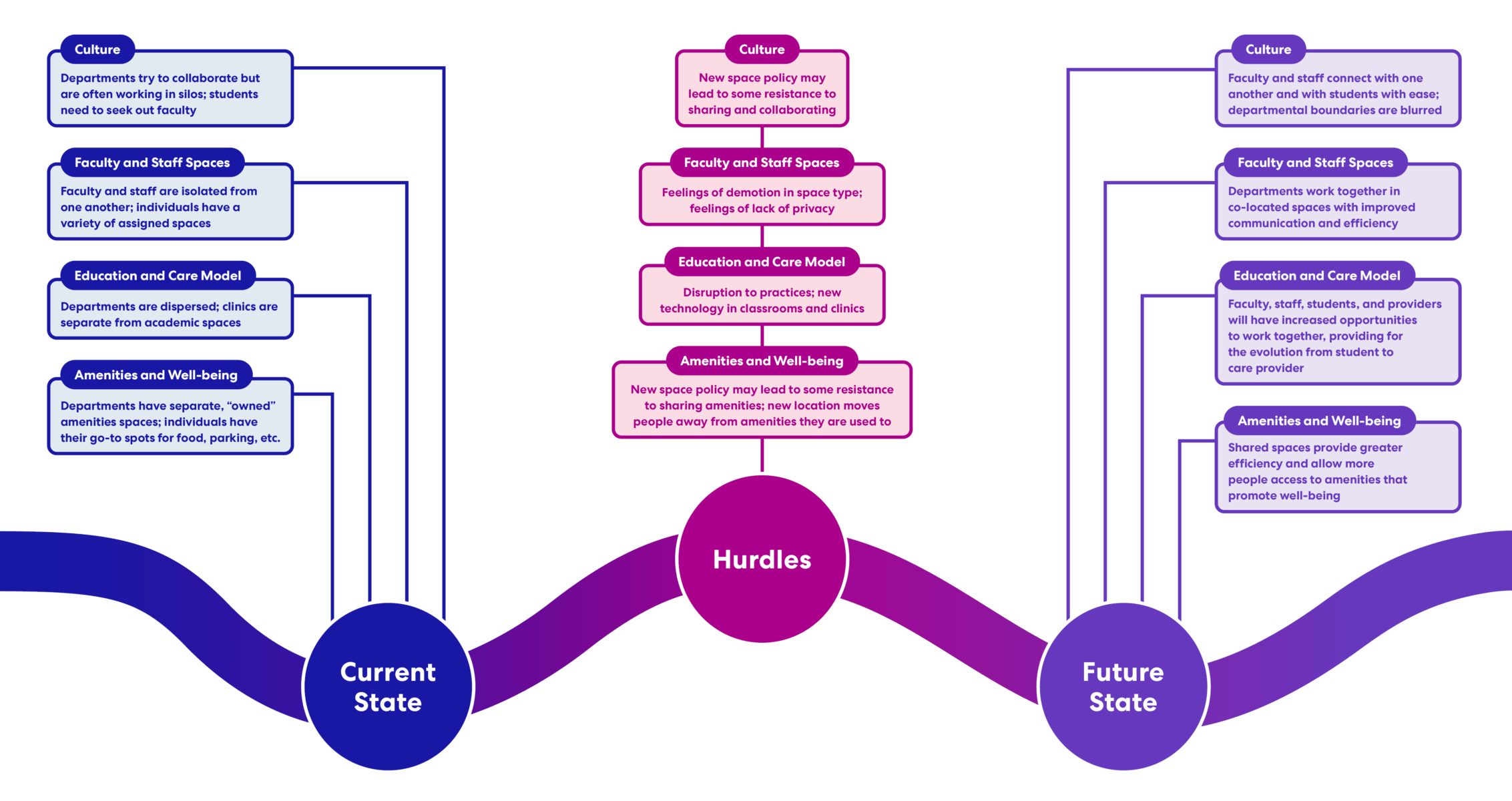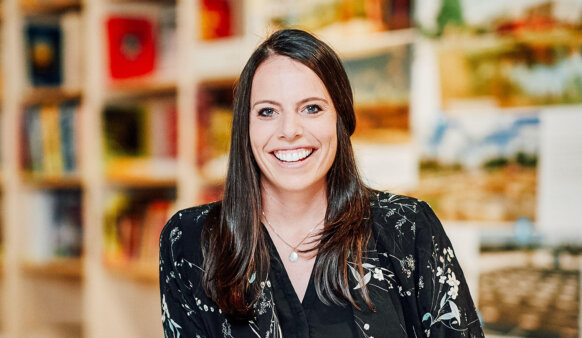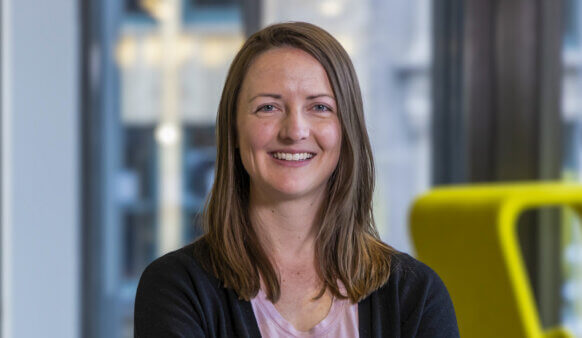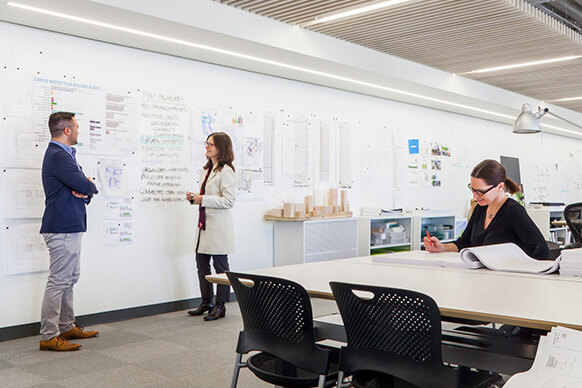Change Management for a New Interdisciplinary Health Building
Healthcare jobs in Ohio multiplied over the past two decades, driving demand for qualified applicants and increasing enrollment in Miami University’s health-related programs. Due to this growth, the university’s clinic, nursing department, and others had to leave the original health sciences building to obtain enough space to serve students and patients. As a result, faculty, students, and staff were dispersed across campus, and they found it difficult to connect and collaborate beyond their disciplines.
With the goal of promoting life-long holistic health, a new Clinical Health Sciences and Wellness building was envisioned to bring healthcare and education programs together in a multidisciplinary health corridor. One of the proposed building’s most appealing aspects was its potential for building awareness across programs and offering opportunities for cross-collaboration. In addition, bringing academics and clinical practice into close proximity would allow students to take classes, receive hands-on training, and participate in real clinic visits all in the same facility.
The concept had broad support, but university leadership recognized that moving so many people to a new location would pose challenges. They engaged Perkins&Will to recommend an approach that would successfully transition occupants from their existing environments to the new building and help them adopt novel ways of working, teaching, learning, and providing care.
In collaboration with leadership, we implemented the three-phase Prosci® change management methodology. In the first phase, we worked with the leadership team to achieve a shared understanding of the change the university community was facing. The process included measuring the readiness for change, identifying major changes, and determining who would be most impacted.
A gap analysis determined the biggest hurdles were likely to include disruption of routines and practices, adjustment to moving into a more shared environment across various departments, and the co-location of departments that had previously been distant or disconnected. To bridge the gap between the current state and the ideal future state, we worked with the leadership team to create a change and communication plan that defined an approach to prepare and support individuals affected by this change.
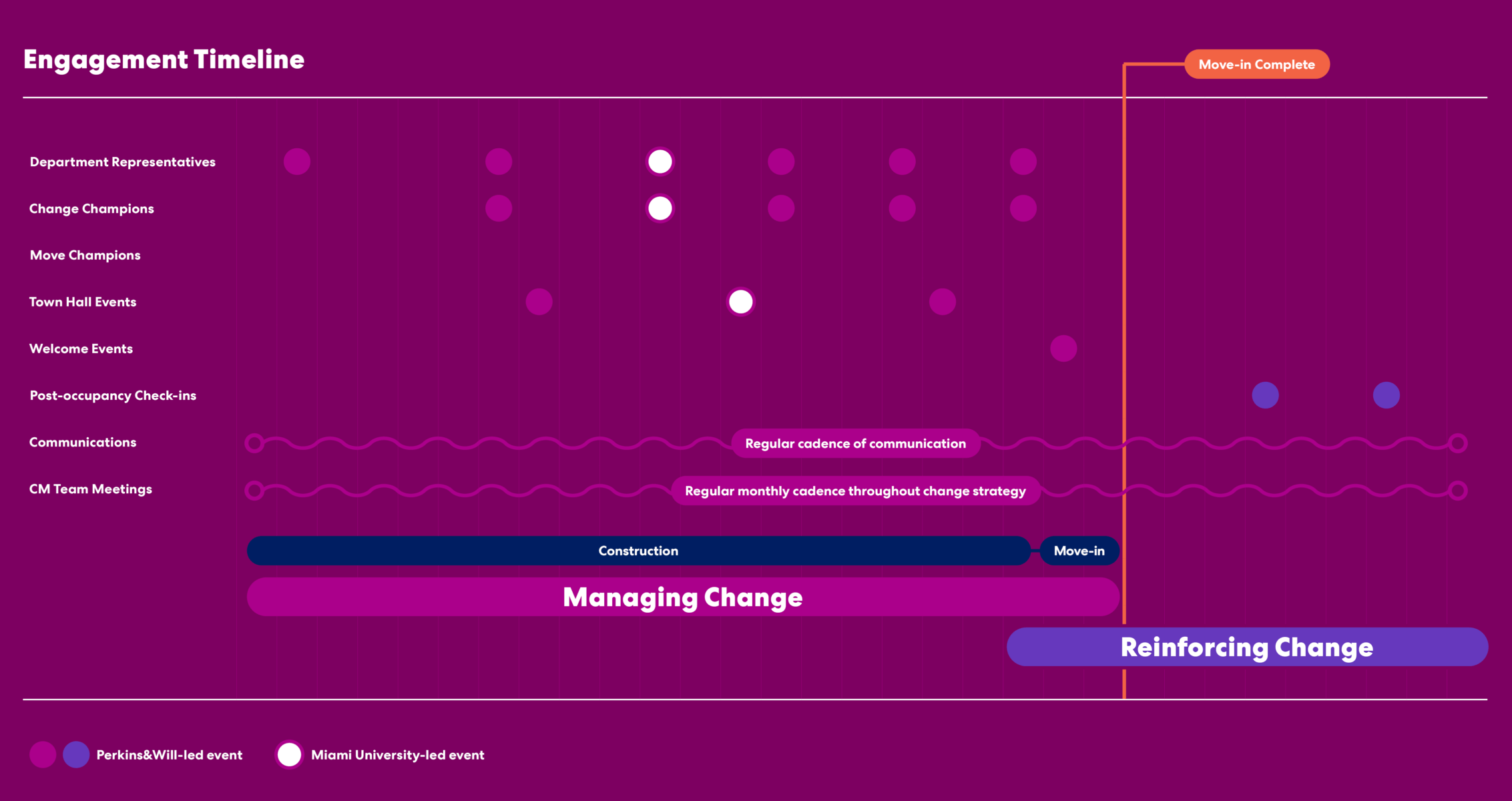
After working with the leadership team to gain a thorough understanding of the changes that lay ahead, we moved into the second phase, which involved actively managing the process leading up to the physical move.
One of the major efforts in this phase involved identifying, engaging, and supporting “change champions,” a group of faculty and staff who would be leading their colleagues through the transition. We defined key objectives and success factors and hosted regular touchpoints to ensure that change champions and department representatives had everything they needed to help ensure a smooth transition.
Special events also helped faculty and staff prepare. Three town halls oriented the campus community to the building and helped to keep them informed through the construction process and prepare them for the change ahead.
Along with meetings and events, the university disseminated messaging in accordance with the change and communication plan to help ensure that everyone in the community, including students, donors, and clinic patients, would be ready for the building’s opening.
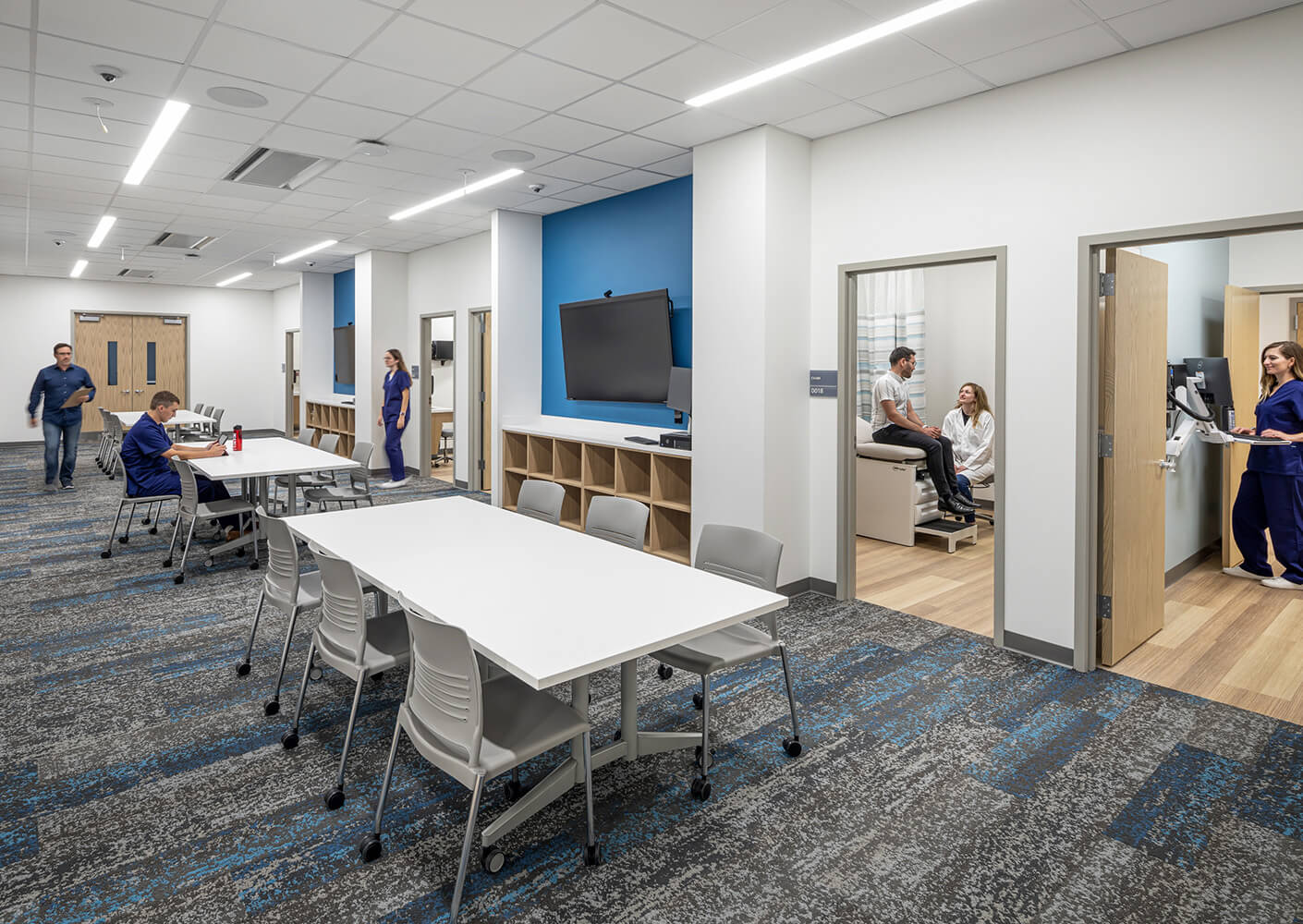
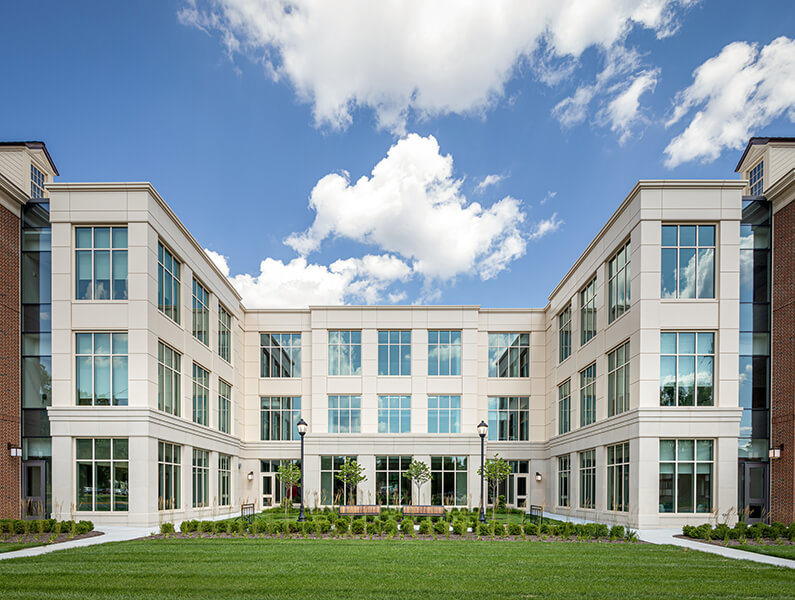
As the building neared final completion, a welcome event for all faculty and staff encouraged them to come celebrate their new home for teaching, learning, and healing. Experts were on hand to answer questions and showcase the building’s learning environments, clinics, and workspace.
After move-in, a post-occupancy feedback session was held in the middle of the first fall semester to gather feedback about how the new space was working for faculty, staff, and students. A post-occupancy survey was deployed at the beginning of the spring semester in 2024 to help quantify the performance of the building and the change management team.
